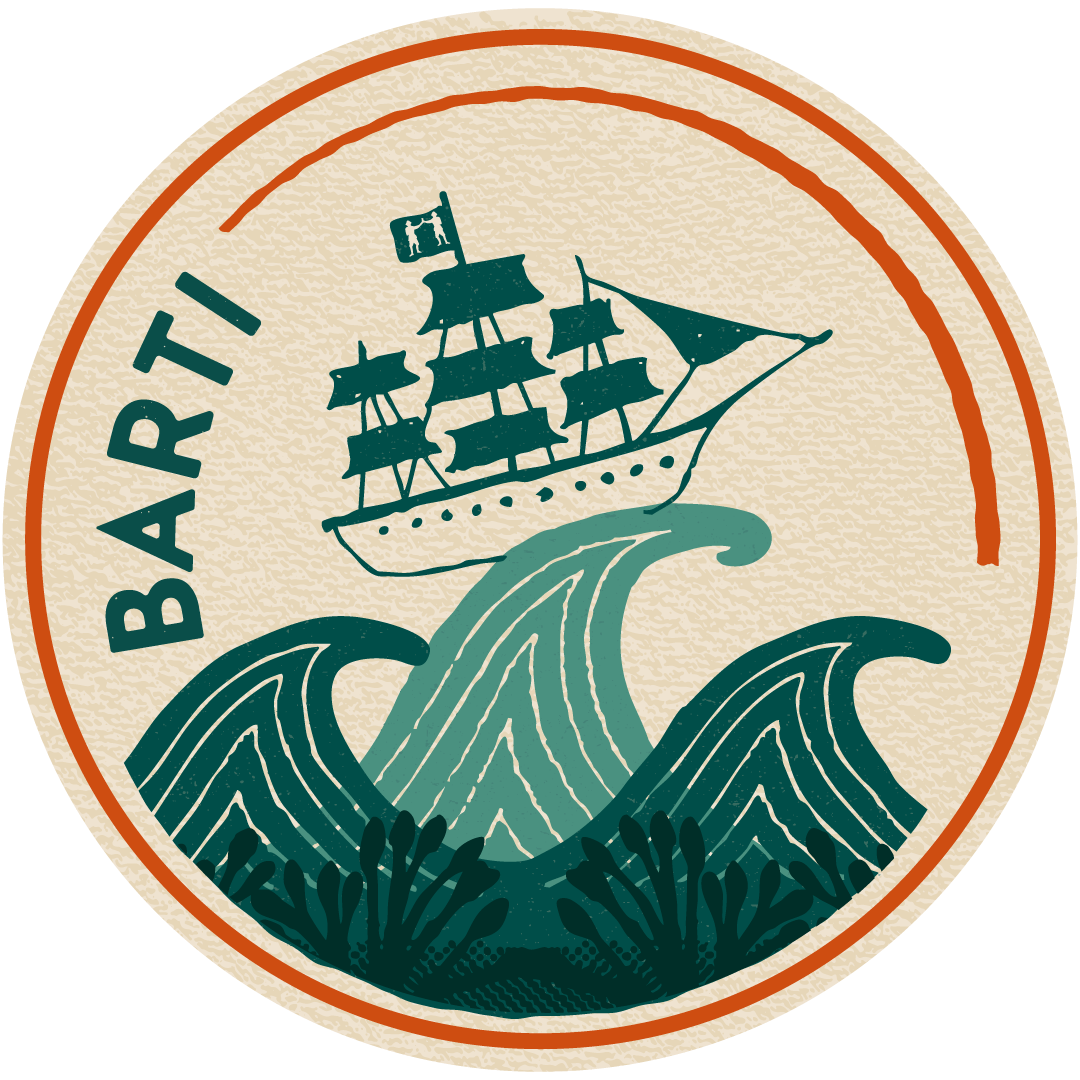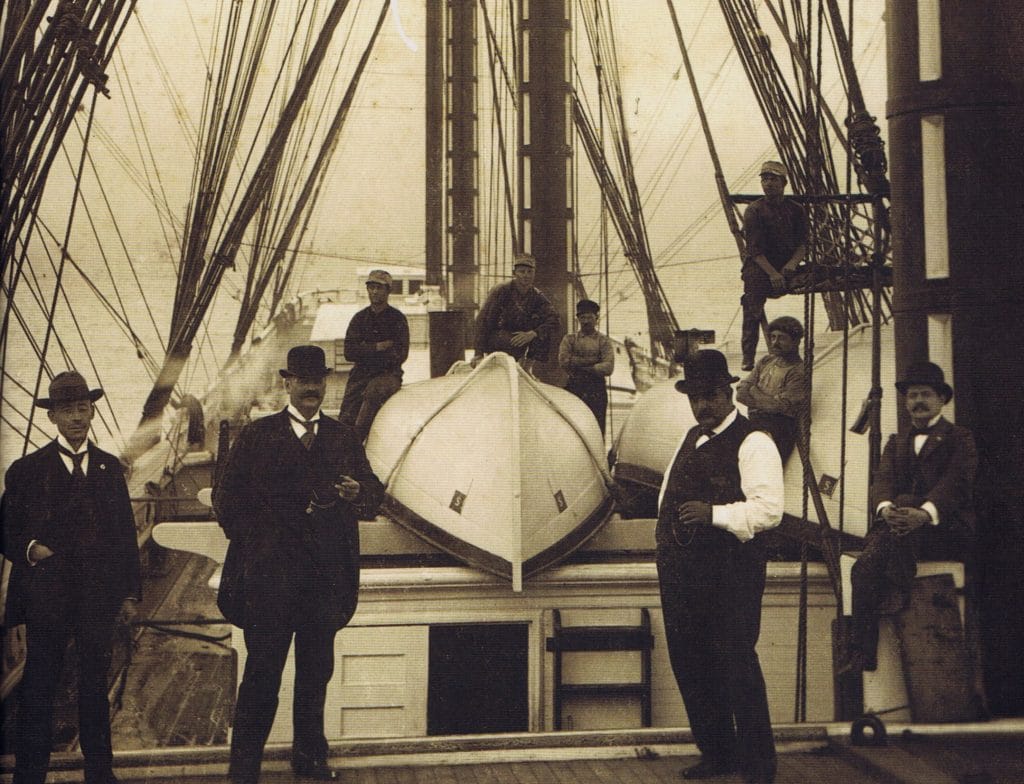Laver seaweed is a precious thing to us here at Barti Rum. The seaweed is what really brings our spiced rum together, combining the flavours, ironing out the sweetness and adding glorious depth to the taste. Now perhaps not everyone would think of using laver in such a way, and to be honest sometimes we take it for granted and forget that people might find the idea of consuming seaweed unusual. But here in South Pembrokeshire, only a couple of miles from where I'm sat now, is a trove of this black gold. 'Freshwater West', fifteen minutes from Pembroke town is beach rich in laver seaweed, and even richer in history linked to the infamous sea plant.

Forty miles East of here in Swansea, laver was regularly picked and consumed in the form of laverbread (not to be mistaken for bread with laver in it, laverbread is boiled up laver made into a paste. It's served at breakfast time mainly, as part of a traditional Welsh fry up). This custom was familiar in most parts of South Wales but it was from the Gower coast of Swansea that it thrived. One day, a hundred and forty years ago something happened which would spark an industry linked to laver seaweed right here in Pembrokeshire. And later it would inspire us too, to champion laver in the same way as our friends in Swansea always have.
I’ve pieced together some quotes from the ‘Pembroke County and West Wales Guardian’ from 1929. In their article they recollect the American shipwreck that changed the shape of the coastal villages around South Pembrokeshire for more than fifty years.
“On this treacherous coast many a proud vessel riding on the crest of the waves in a storm met her doom. [They don’t do journalism like that anymore!] To make mention of one, it was Monday January 13th 1879 when the weather was dull and thick and the sea running high, that an American sailing vessel by the name of Thomas M Reed got stranded on the sands at Freyneslake Bay [adjoining beach to Freshwater West] and became a total wreck”

“She sailed from San Francisco for Liverpool on the 7th September 1878 and had therefore been more than four months at sea. Her cargo consisted of 1,498,176 tons of Columbia river salmon, 257 cases of beef, 49 tons of copper ore, eight tons of lead ore, 214 sacks of shells and 1000 tons of Californian wheat.”
The newspaper article reports of the few survivors from the wreck “…they landed on the shore in an exhausted state, but a little brandy judiciously administered enabled them to get as far as Gupton Farm, about half a mile from the scene of the disaster.”
What made this wreck so special was the hoards of visitors it drew. They came to see the spectacle and to investigate what riches they could claim for themselves. The paper goes on to describe the scene, “Thousands of people visited the spot and the sight of the tens of thousands of tins of salmon and mother of pearl shells strewn over the shore will ever remain in the memory of each one”.
Those who had travelled from as far as Swansea spotted a treasure unseen by the others. Beyond the wreckage and the vast sporadic pieces of cargo, they saw laver seaweed. And they saw tons of it. Growing abundantly, all over the coastline, the greeny black rock wrap glistened, as the sun shone on it, exposed at the arrival of low tide. What a sight, what a feast! What an opportunity.
Off the back of the colossal shipwreck tragedy, soon a deal was struck. The ladies of the local villages, mainly those in Angle would gather seaweed to be sent directly to Swansea for processing into laverbread. Huts were erected on the grassy banks above the beach where each worker could store their harvest. Here it would dry a little to save on weight before a donkey and cart would take the load to the railway station in nearby Pembroke.

This cottage industry thrived for decades until sadly there was a decline in the popularity of laverbread. Presumably the influx of different foods becoming readily available and affordable was part of the explanation for this.
Nonetheless there remains one, now unused, seaweed drying hut at Freshwater West beach. It was restored and is currently looked after by the National Trust. This small thatched structure stands as a nod to the beach’s seaweed picking past and as inspiration for the future.

Here we are all these years after the Thomas M Reed shipwreck tragedy, putting laver seaweed in our spiced rum like it’s as typical a flavour as any you might find. Without the wreck, would Pembrokeshire have become the second biggest source of laver seaweed to feed the entire welsh South coast’s craving for it? Would we as Pembrokeshire folk have considered this novel but invaluable ingredient for our rum? And would Barti Ddu Spiced Rum be anywhere near as tasty without it?
Perhaps not.




Dear Captain Small
Best Spiced Rum Glazed Ham
Share: